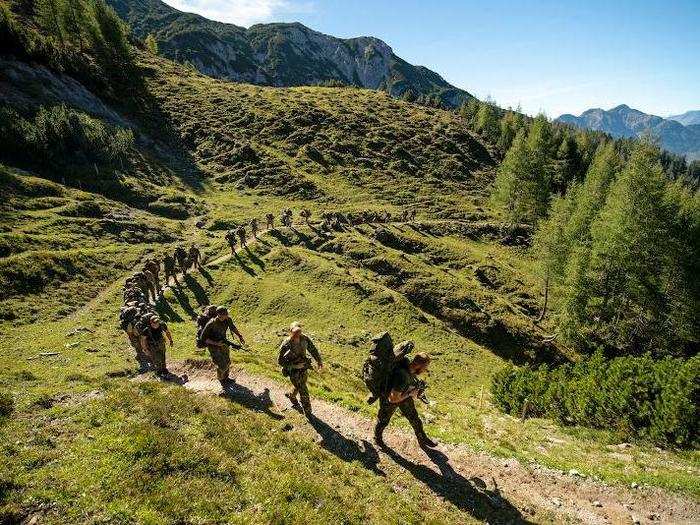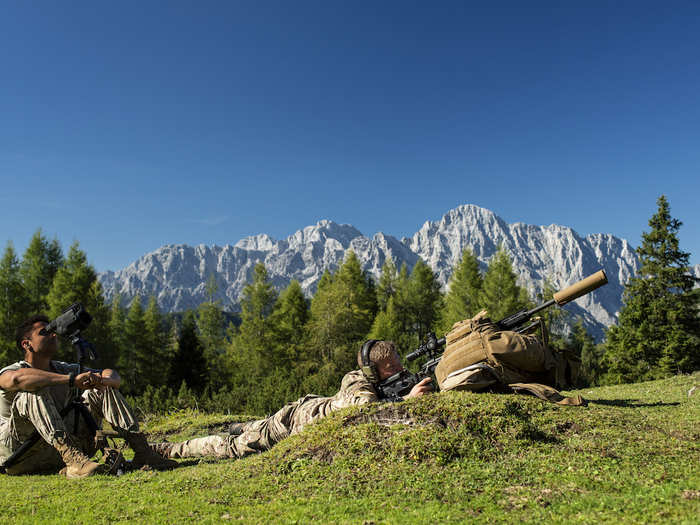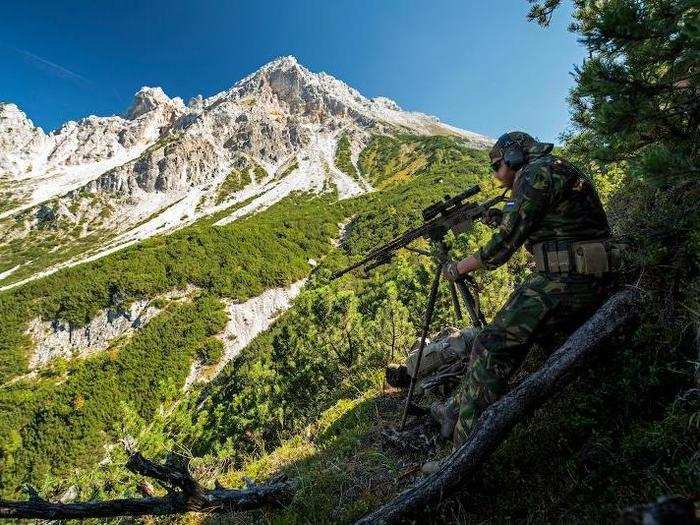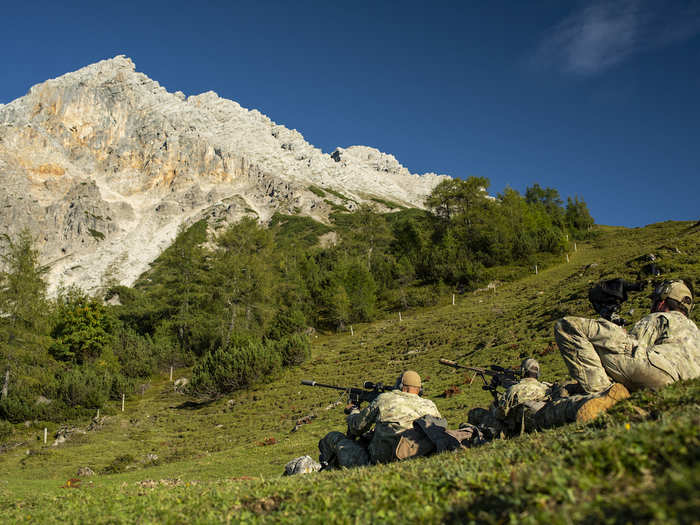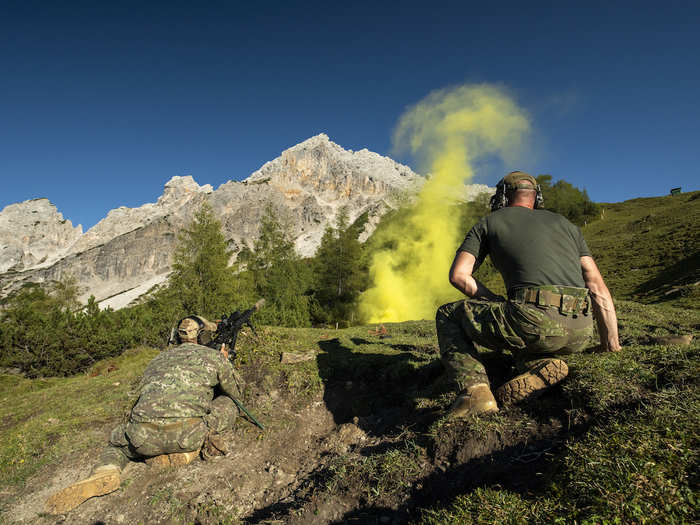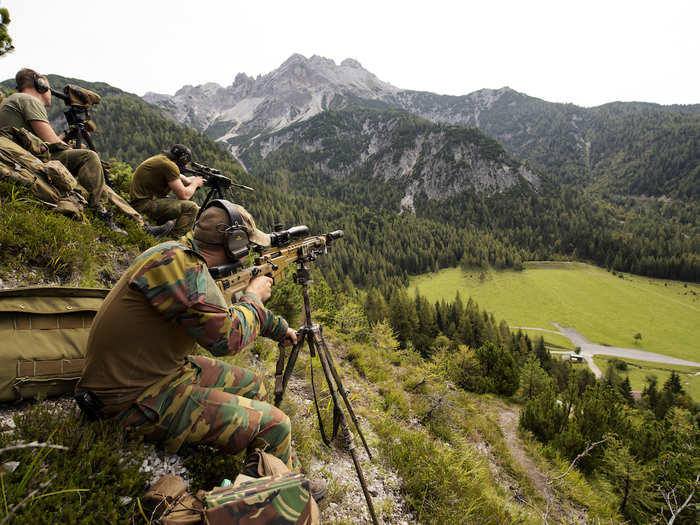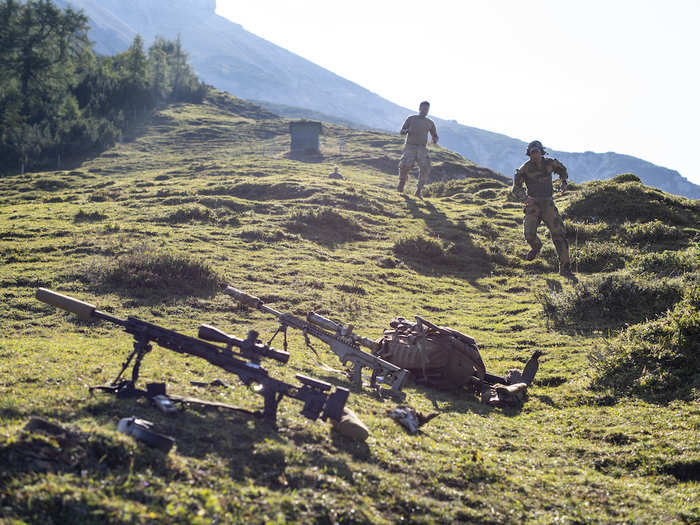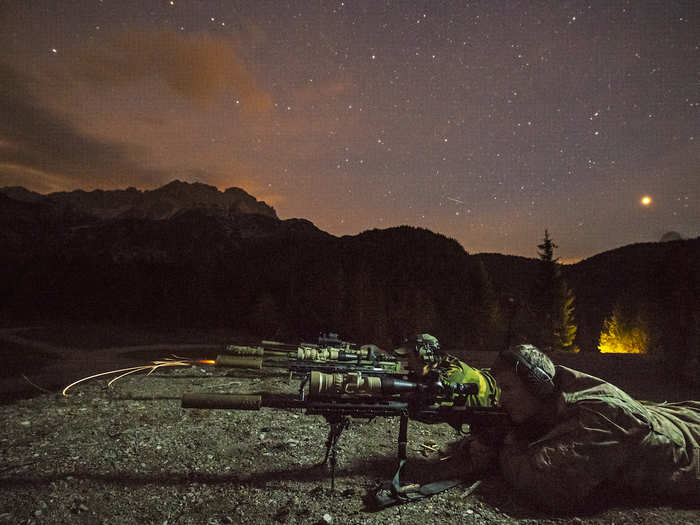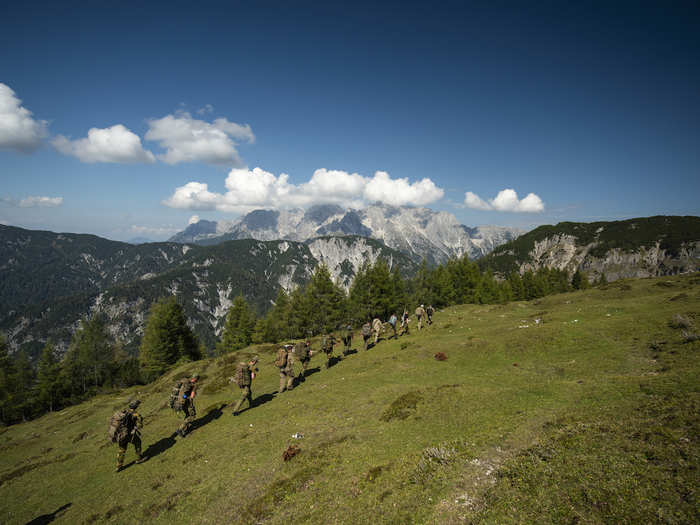And the training taught the soldiers how to pack lightly.
“With a sniper rifle and sometimes two rifles, hundreds of rounds of ammo, tripod, spotting scope and night optics, mountaineering gear, sleep system, and water and food, your pack easily gets over 40 kilos," one Belgian special forces soldier said.
"It is a difficult balance because snipers require a lot of specialized equipment, so you have to decide what is absolutely mission essential.”
After ascending to the range, they started the high-angle shooting.
“Each degree of angle will have an associated number value called its cosine,” Rishovd said.
“For snipers shooting at high-angles they need to measure the range to the target in line of sight and multiply it by the cosine [to] get the actual range the bullet is going to fly. Then the sniper will set his bullet drop compensation from that distance.”
“The calculations are not very difficult,” one Belgian Special Forces soldier said. “The challenge is the shooting positions."
"To aim at targets that are at odd angle requires getting into difficult and sometimes unstable and uncomfortable positions," he continued. "It is also difficult for the spotter to get a good line of sight. The further out you shoot the more the angle and other factors effects your shot. Operationally it is one of the most commonly used skills, so it is good to refine them here.”
They even practiced "stress shoots," which test a soldier's physical fitness and firearms training together to replicate a combat situation.
You can read more about stress shoots here.
Snipers from different countries were paired together too.
“Each country has its own tactics, techniques and procedures,” an unnamed US Army Special Forces sniper instructor said. “When we pair snipers from different countries together, or have them compete against each other, they are able to compare and see what works best."
After the training sessions, the snipers hiked back down from the high-angle range.
“It is very difficult to find ranges where you can shoot at high angles,” US Army Staff Sgt. Ryen Funk said. “We don't get to practice high angle enough, so it is good to come here and get that experience.”

